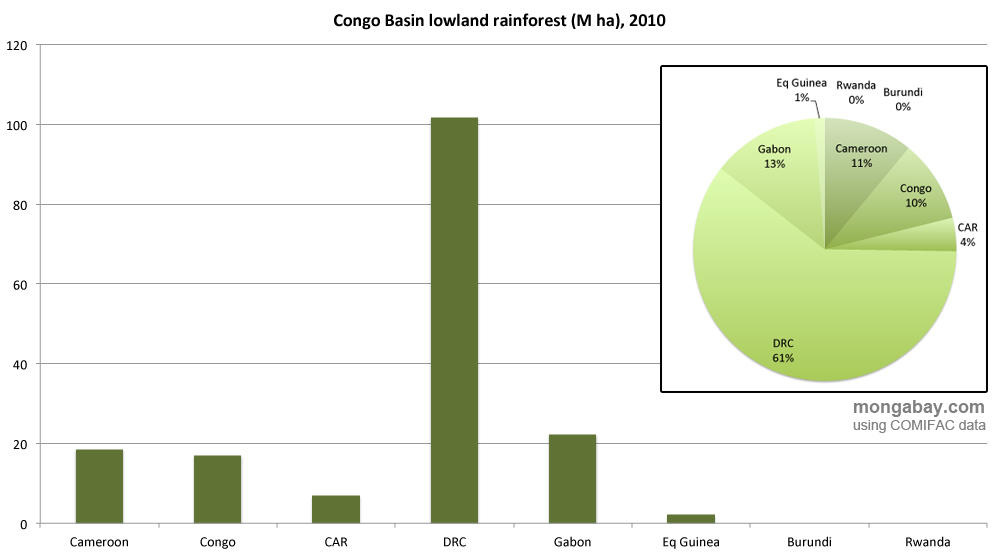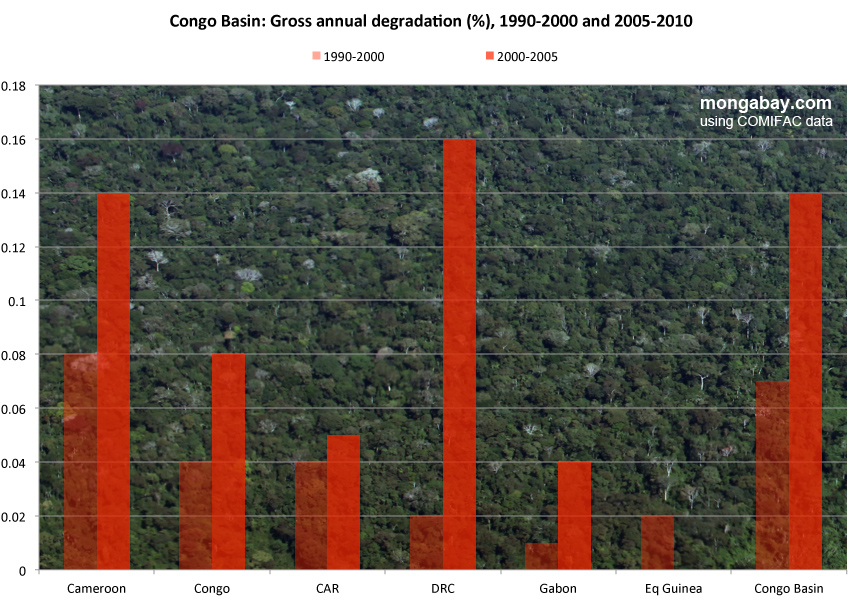Human Impacts
There are many current impacts that are negatively impacting the tropical rainforest of the Congo River Basin region. Logging is the worst offense, however, with an astounding loss of forest lost each year to logging, both in commercial and illegal small scale operations (1,3). The forest region is declining at an average total rate of .35% a year (5). Logging operations serve both to export money for profit themselves, but also provide the government with payment for using their forest. In addition, they also employ many of the local people, almost all of whom live in a state of poverty, which allows these people to feed their families and receive health care. However, the commercial logging companies must operate within certain limitations imposed by the government, while many illegal loggers rely on corrupt politicians to destroy restricted lands (1,3,6). It is estimated up to 50% of the logging in Cameroon, for example, is illegal (4). Both of these kinds of loggers create logging roads, or large roads that destroy trees and vegetation, to transport out the cut wood. Not only do these roads directly destroy vegetation, but they also indirectly destroy the forest further by allowing small subsistence agriculture operations to emerge (2). Subsistence farmers are mainly poor families or groups, those not employed by the logging companies, who rely on slash and burn farming to clear patches of forest to grow crops, such as yams, or raise livestock (2).


http://anglicanaid.net/?p=269
http://www.greenpeace.org.uk/blog/forests/congo-logging-contracts-cancelled-forest-still-under-threat-20090121
Besides logging and subsistence farming, many smaller problems also plague this region, such as civil strife, mining, and the bushmeat trade. During the past few decades, civil wars and roaming militias have created a virtual migration of refugees from their homes and on large treks through the forest, resulting in the destruction of plants and trees to build shelters and the hunting of animals, many endangered species, to feed the masses of displaced (2). The Congo Basin is rich in minerals, and much of the mining operations to extract the minerals is done through questionable and unmonitored methods (2). These methods allow for many unhealthy minerals to seep into the soil and Congo River, while also destroying large swaths of land to allow for the operations to take place, as can be seen below. Finally, the prevalent bushmeat trade threatens many animals species, including some on the endangered species list, simply as a way for many people to get protein into their diet (2). Poachers use logging roads to penetrate into the forest,then killing whatever animals they can find to sell in open market venues to locals. Much of this poaching is done illegally.



(citations from top left clockwise)
http://commdev.org/artisanal-and-small-scale-mining-drc
http://www.bornfreeusa.org/a9c_bushmeat.php
http://www.guardian.co.uk/world/gallery/2008/oct/28/congo-unitednation



















